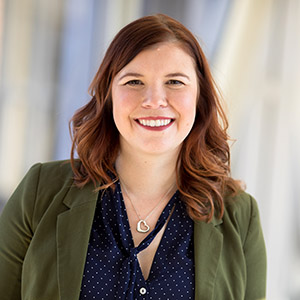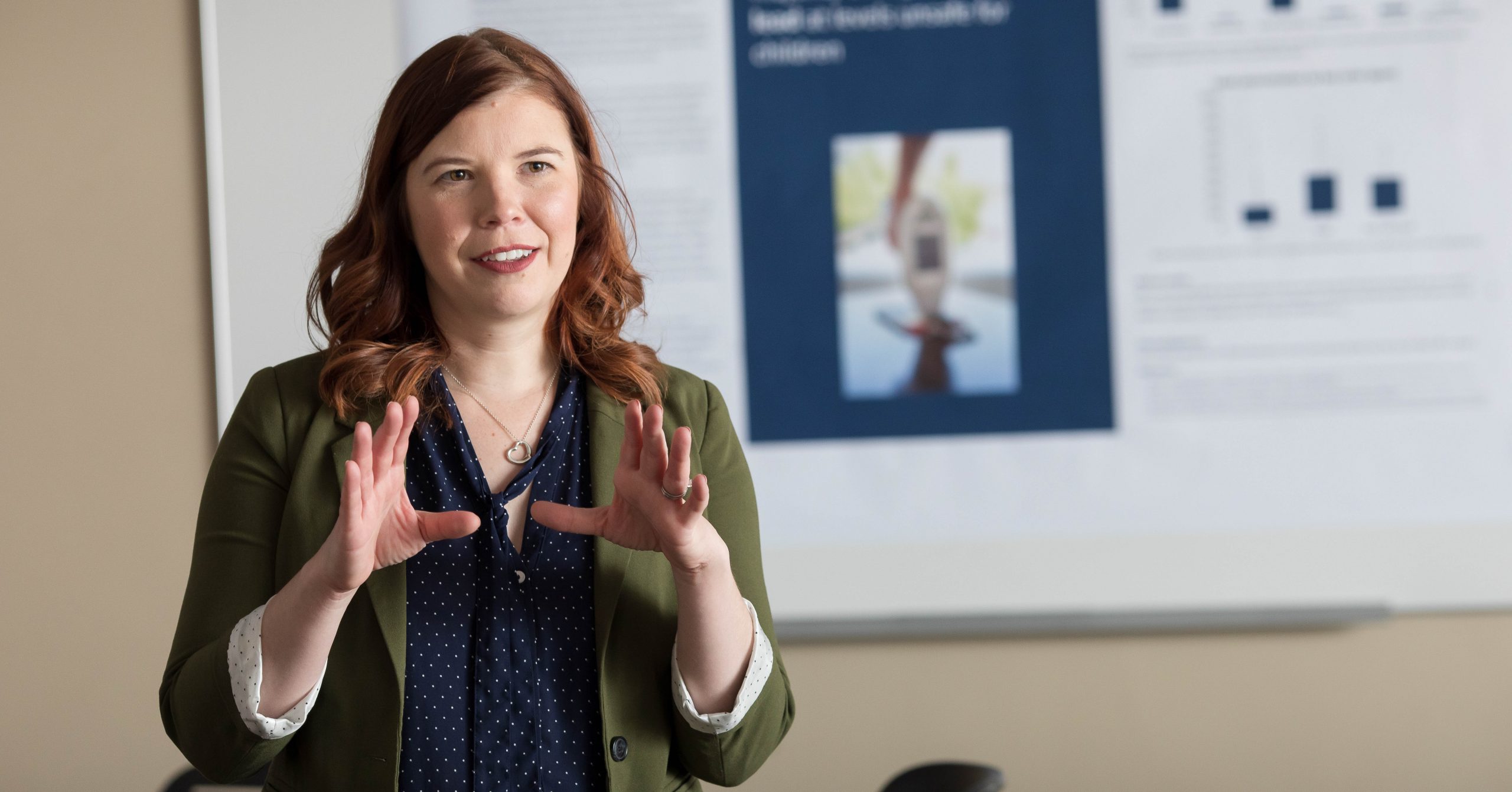A lead role at the Minnesota Department of Health
Stephanie Yendell, DVM/MPH ’11 supervises the Health Risk Intervention Unit at the Minnesota Department of Health (MDH) and runs the Lead and Healthy Homes and Toxic Free Kids programs.

“We are most concerned about lead in young children,” says Yendell. “Lead affects learning and behavior, especially while children’s brains are developing. It can decrease IQ and cause attention deficits. Even at lower levels, lead can affect IQ, having a significant impact on the child and a smaller impact across the wider community. If every child has a loss of two or three IQ points, that really shifts the curve for that community.”
In the late 1970s, the average lead blood level in the United States was 15 micrograms per deciliter. The CDC recommends public health actions when levels surpass 5 micrograms per deciliter. The average level has decreased since then, but 2015-16 saw a disturbing rise in lead blood levels for two million young children.The goal for optimal health is zero, and there’s more that needs to be done to protect children.
Supporting communities that need it most
In Yendell’s current work overseeing incoming and outgoing grant programs, she sees that, like with many measures of health in Minnesota, certain communities are at greater risk of lead exposure than others. In the Twin Cities, residents of North and South Minneapolis and Frogtown and the East Side of St. Paul have the highest rates of unhealthy lead exposure. In Greater Minnesota, the problem is more likely to occur in towns where families are rehabbing older homes or when families are moving into rentals that haven’t been well maintained.
“We try really hard to work with the communities that are most in need and have the least agency in being able to make changes for themselves.”
“We try really hard to work with the communities that are most in need and have the least agency in being able to make changes for themselves,” says Yendell. “As an example, refugees are at higher risk of elevated lead levels upon their arrival to our state from exposure that happened in their countries of origin. But they’re also at risk for winding up in housing in the U.S. that isn’t the healthiest.”
Career path
Yendell’s path to her current role was circuitous. As a child, she dreamed of working with animals. Seeing the health crises of hoof and mouth disease and BSE (“mad cow disease”) during high school helped her imagine how veterinary training might result in helping with large-scale prevention efforts.
She sought out the University of Minnesota specifically because of its dual-degree option in which she could earn her DVM and MPH concurrently.
“When I came to Minnesota, nowhere else were the students as relaxed as they were here,” says Yendell. Yendell said she appreciated the very obvious sense of collaboration and collegiality she found at the U of M.
Yendell’s studies definitively shaped her career. “When I started my MPH, I realized I was more interested in surveillance than preparedness and emergency response,” says Yendell. “I wanted to do the day-to-day work where you’re always focused on the occurrence of a condition or disease rather than a very rare condition that might only come up once or twice in a career. I am much more interested now in the routine work of public health.”
“I wanted to do the day-to-day work where you’re always focused on the occurrence of a condition or disease rather than a very rare condition that might only come up once or twice in a career.”
Early in her career, Yendell’s veterinary and public health training helped her secure a position with the Epidemic Intelligence Service (EIS), an elite group of trained professionals who are poised to immediately respond to disease outbreaks across the globe. But, the siren song of Minnesota was strong. Yendell loved the community here, the diverse mix of restaurants and cultural opportunities, and the proximity to wild areas a short drive from the city. She left the EIS and returned to Minnesota to work for the State’s health department in 2013.
Yendell’s teams at MDH include School of Public Health alumni and current students.
“School of Public Health students graduate with a really solid set of well-rounded public health skills,” says Yendell. “Students are able to bring different strategies to the table on how to address public health problems and jump into the public health workforce at a really high level.”

